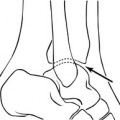Chapter 1 General notes
Radiology
The procedures are laid out under a number of sub-headings, which follow a standard sequence. The general order is outlined below, together with certain points that have been omitted from the discussion of each procedure in order to avoid repetition. Minor deviations from this sequence will be found in the text where this is felt to be more appropriate.
Contraindications
Risk due to radiation
Radiation effects on humans may be:
There are legal regulations which guide the use of diagnostic radiation (see Appendix I). These are the basic principles:
Justification is particularly important when considering the irradiation of women of reproductive age, because of the risks to the developing fetus. The mammalian embryo and fetus are highly radiosensitive. The potential effects of in-utero radiation exposure on a developing fetus include prenatal death, intrauterine growth restriction, small head size, mental retardation, organ malformation and childhood cancer. The risk of each effect depends on the gestational age at the time of the exposure and the absorbed radiation dose.2 Most diagnostic radiation procedures will lead to a fetal absorbed dose of less than 1 mGy for imaging beyond the maternal abdomen/pelvis and less than 10 mGy for direct abdominal/pelvic or nuclear medicine imaging.7 There are important exceptions which result in higher doses. Computed tomography (CT) scanning of the maternal pelvis may result in fetal doses below the level thought to induce neurologic detriment to the fetus, but, theoretically, may double the fetal risk for developing a childhood cancer.8
Almost always, if a diagnostic radiology examination is medically indicated, the risk to the mother of not doing the procedure is greater than the risk of potential harm to the fetus.9 However, whenever possible, alternative investigation techniques not involving ionizing radiation should be considered before a decision is taken to use ionizing radiation in a female of reproductive age. It is extremely important to have a robust process in place that prevents inappropriate or unnecessary ionizing radiation exposure to the fetus. Previous guidelines recommended that all non-emergency examinations that would involve irradiation of the lower abdomen or pelvis in women of child-bearing age be restricted to the first 10 days (10-day rule) or 28 days (28-day rule) following the onset of a menstrual period.10 This led to some potential practical difficulties, e.g. for women who denied recent sexual intercourse, for those with an irregular menstrual cycle or for those who had been taking the oral contraceptive pill. There are also concerns:
Joint guidance from the National Radiological Protection Board, the College of Radiographers and the Royal College of Radiologists recommends the following:11
If the examination is necessary, a technique that minimizes the number of views and the absorbed dose per examination should be utilized. However, the quality of the examination should not be reduced to the level where its diagnostic value is impaired. The risk to the patient of an incorrect diagnosis may be greater than the risk of irradiating the fetus. Radiography of areas that are remote from the pelvis and abdomen may be safely performed at any time during pregnancy with good collimation and lead protection.
Risk due to the contrast medium
The risks associated with administration of iodinated contrast media and magnetic resonance imaging (MRI) contrast are discussed in detail in Chapter 2 and guidelines are given for prophylaxis of adverse reactions to intravascular contrast.
Equipment
For many procedures this will also include a trolley with a sterile upper shelf and a non-sterile lower shelf. Emergency drugs and resuscitation equipment should be readily available (see Chapter 17).
See Chapter 9 for introductory notes on angiography catheters.
Patient preparation
The radiologist must assess a child’s capacity to decide whether to give consent for or refuse an investigation. At age 16 years a young person can be treated as an adult and can be presumed to have the capacity to understand the nature, purpose and possible consequences of the proposed investigation, as well as the consequences of non-investigation. Following case law in the United Kingdom (Gillick v West Norfolk and Wisbech Area Health Authority) and the introduction of The Children Act 1989, in which the capacity of children to consent has been linked with the concept of individual ability to understand the implications of medical treatment, there has come into existence a standard known as ‘Gillick competence’. Under the age of 16 years children may have the capacity to consent depending on their maturity and ability to understand what is involved. When a competent child refuses treatment, a person with parental responsibility or the court may authorize investigations or treatment which is in the child’s best interests. In Scotland the situation is different: parents cannot authorize procedures a competent child has refused. Legal advice may be helpful in dealing with these cases.14
Preliminary film
The purpose of these films is:






